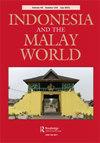泰国中部的马来流亡者
IF 0.9
3区 社会学
0 ASIAN STUDIES
引用次数: 0
摘要
摘要这篇短文介绍了一些临时发现,这些发现为泰国和马来世界北端的伊斯兰教文化地理提供了新的线索。对泰国官方注册的清真寺的分析显示,10%的清真寺位于泰国中部。其中一半是曼谷大都市的一部分,74%集中在盛盛运河沿岸的东部地区。我总结了泰国研究专家提供的图片,他们记录了马来人(主要是非自愿)迁移到泰国中部、曼谷中部和(后来)东郊的日期、起源和情况。随后讨论了暹罗人的做法,如带走所有奴隶(chalei),以及在sakdina制度下组织劳工。本文章由计算机程序翻译,如有差异,请以英文原文为准。
Malay Exiles in Central Thailand
ABSTRACT This short article presents provisional findings that shed new light on both the cultural geography of Islam in Thailand, and northern extremities of the Malay world. An analysis of mosques officially registered in Thailand reveals that 10% are located in Central Thailand. Half of these are part of metropolitan Bangkok, and 74% of these are concentrated on its eastern districts along the Saen Saep Canal. I summarise the picture provided by Thai studies specialists who have documented the dates, origins, and circumstances of the (mainly involuntary) movement of Malays to Central Thailand, central Bangkok, and (later) to its eastern outskirts. This is followed by discussions of Siamese practices such as the taking of all slaves (chalei), and the organisation of labour under the sakdina system.
求助全文
通过发布文献求助,成功后即可免费获取论文全文。
去求助
来源期刊

Indonesia and the Malay World
ASIAN STUDIES-
CiteScore
2.00
自引率
0.00%
发文量
17
期刊介绍:
Indonesia and the Malay World is a peer-reviewed journal that is committed to the publication of scholarship in the arts and humanities on maritime Southeast Asia. It particularly focuses on the study of the languages, literatures, art, archaeology, history, religion, anthropology, performing arts, cinema and tourism of the region. In addition to welcoming individual articles, it also publishes special issues focusing on a particular theme or region. The journal is published three times a year, in March, July, and November.
 求助内容:
求助内容: 应助结果提醒方式:
应助结果提醒方式:


